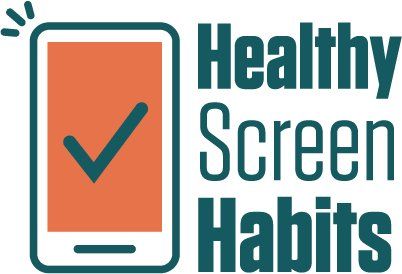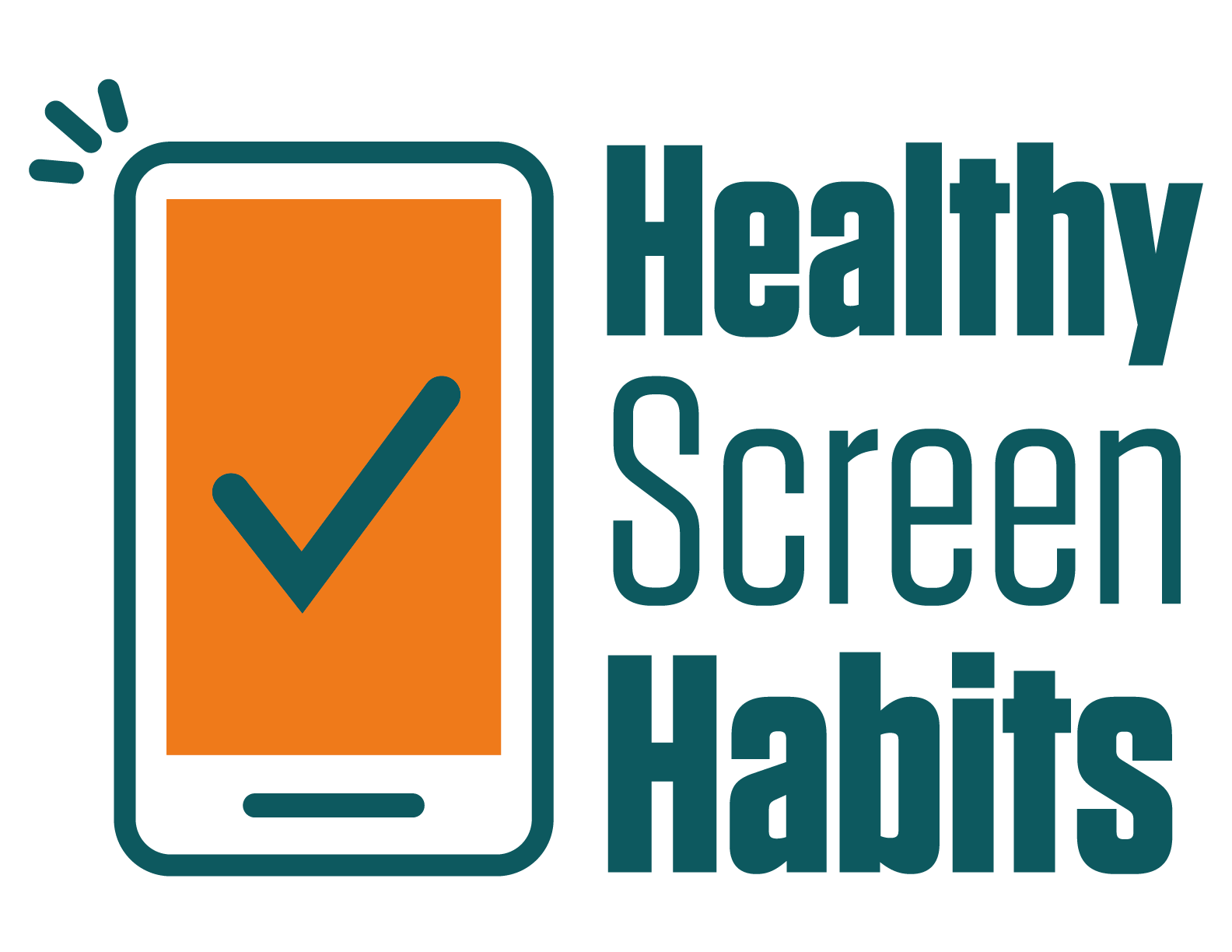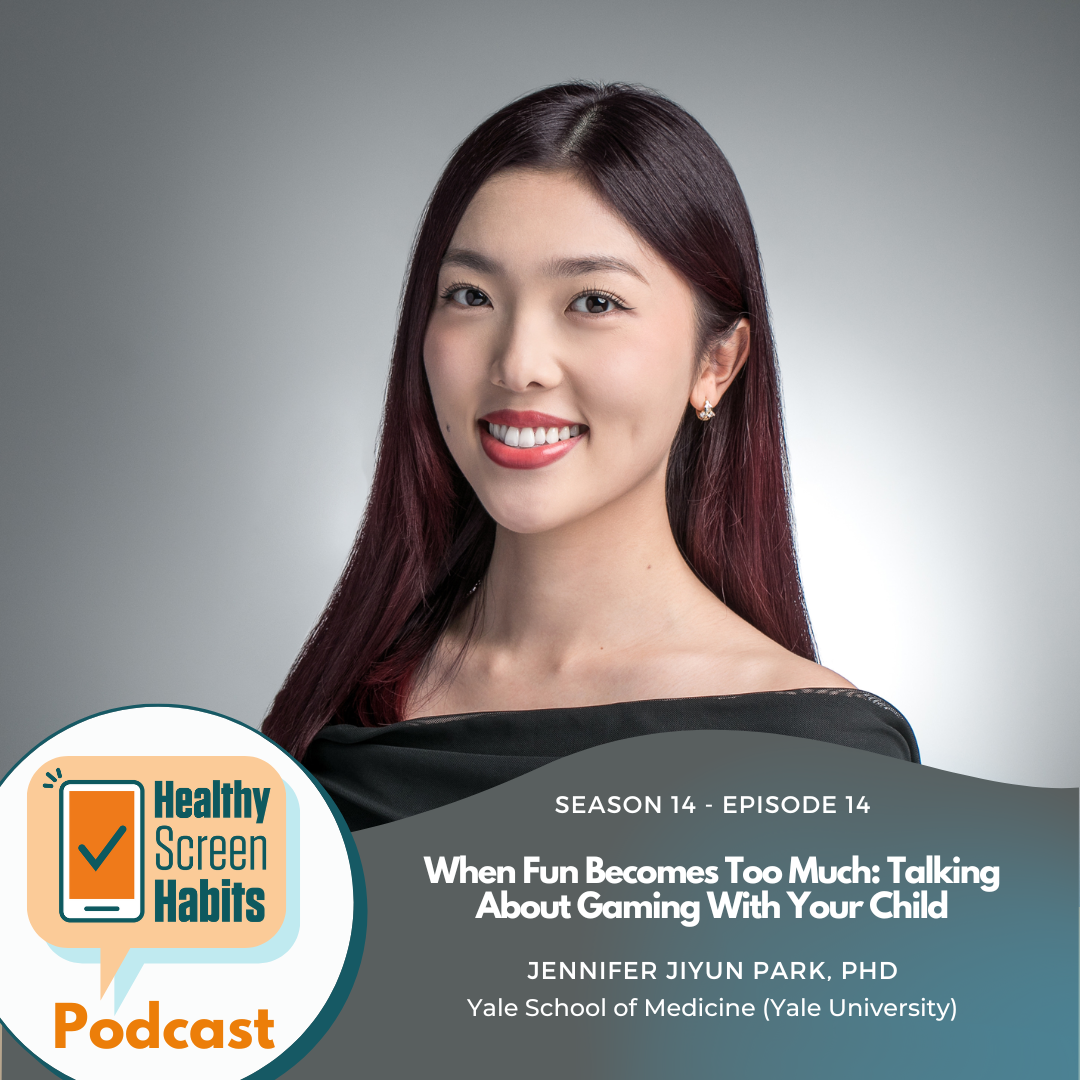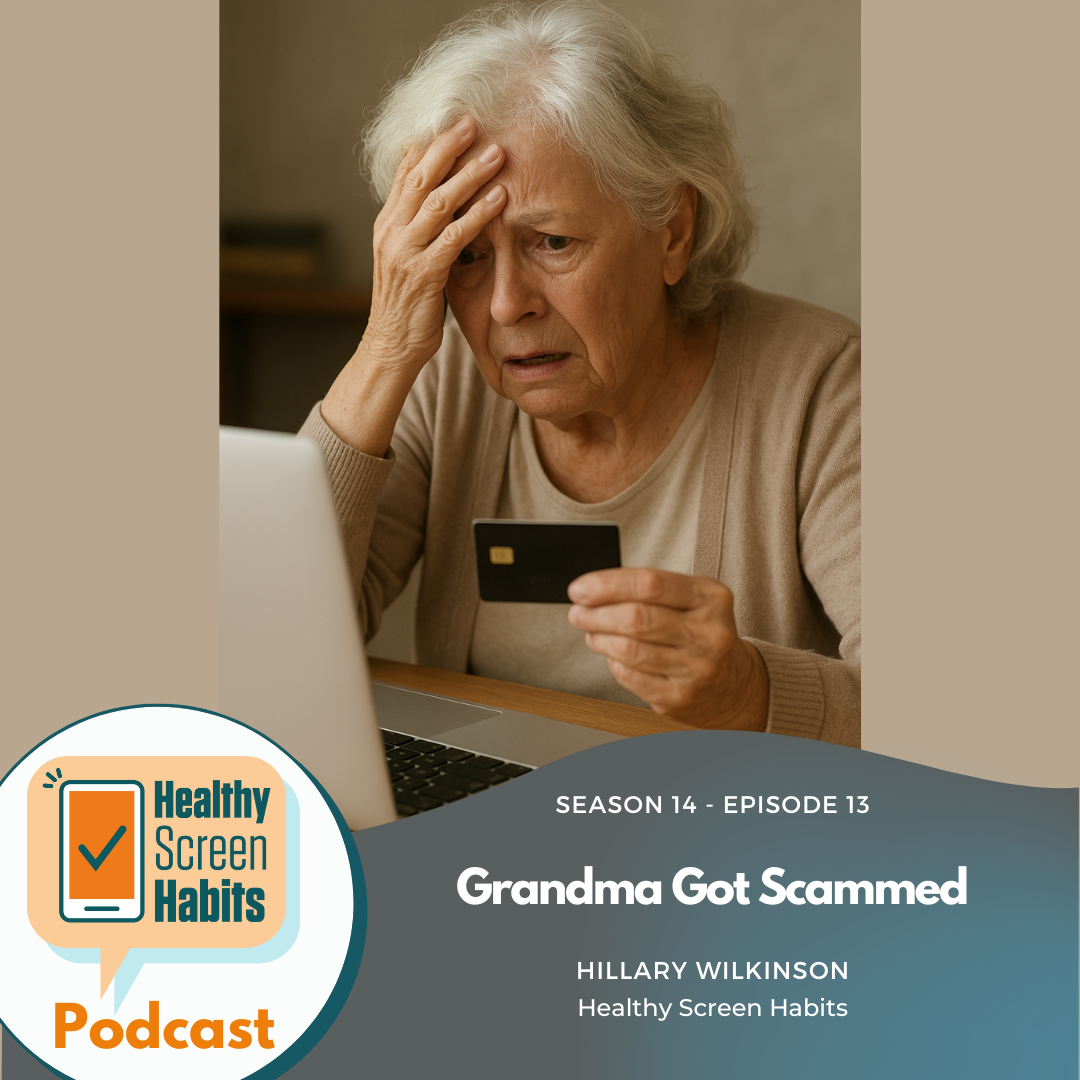S4 Episode 2: Smartphone Free Childhood Now! // Jodi Carreon
Hosted by Hillary Wilkinson
"Our primary core belief is that parents can, and should, delay access to smartphones and social media for as long as possible."
~Jodi Carreon
Jodi Carreon is a self-described “regular mom” who honestly is anything but!! While volunteering at her kids' school. She discovered students were more focused on screens instead of each other.
By accessing the tools and templates at Smartphone Free Childhood US, she founded a local parent group that focuses on limiting and intentionally using technology within her school district.
Want to learn more about how YOU can do the same?
Listen now!
Healthy Screen Habits Takeaway
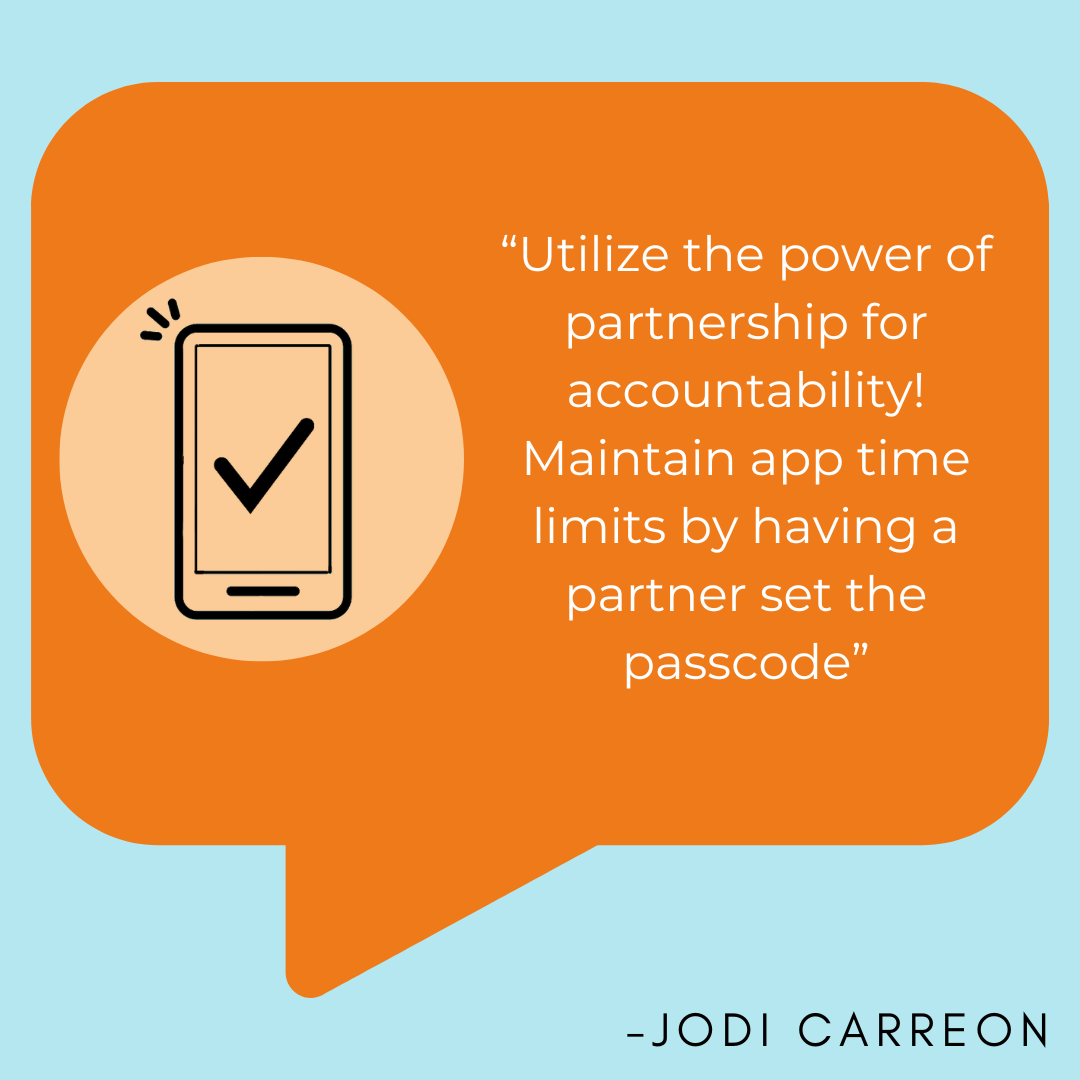
Resources
For More Info:
https://www.smartphonefreechildhoodus.com/
Resources Mentioned:
Book:
The Anxious Generation, by Jonathan Haidt
Ooma Landline:
https://www.ooma.com/home-phone-service
Phone Free Schools Movement: https://www.healthyscreenhabits.org/s9-episde-8-phones---school-a-bad-mix-kim-whitman-sabine-polak-and-mileva-repasky

Show Transcript
Hillary Wilkinson: (00:00)
My guest today is a self-described “regular mom” who honestly is anything but regular! While volunteering at her kids' school. She discovered students were more focused on screens instead of each other. And today we're going to hear about what she did about that in interest of returning the focus of children to each other and away from addictive online activities. Using resources from Smartphone Free Childhood US, the Screen Time Action Network, and the phone-free school movements. She's founded a local parents group focused on limiting and intentionally using technology within her school district. Thank you for being here today, Jodi Carreon.
Jodi Carreon: (01:04)
Thank you so much for having me.
Hillary Wilkinson: (01:06)
Jody. What was your sort of aha moment that led you to this role of, I'm gonna call it like mom activism ?
Jodi Carreon: (01:16)
Yeah, of course. I think it was, it was a combination of things. Um, you mentioned that I, I was volunteering in my kids' school and I, I saw what, um, devices were doing to kids and, and their interactions with each other. Um, I've also, uh, over the years sort of recognized my own problematic use mm-hmm . And then really the, the sort of big aha moment was when Jonathan Haidt's book The Anxious Generation, came out this last year, and I think a lot of us can relate to that. It was sort of this galvanizing moment where it, it really felt like this was the time to take action and, and that's when I felt compelled to do something in my community and, and, and larger than that as well.
Hillary Wilkinson: (01:56)
Yeah. Yeah. For sure. So, I have to ask, your organization is with smartphone-free childhood. Yeah. Do, do your kids have smartphones? ? This is like a, like a tell-all an expose , but not really.
Jodi Carreon: (02:16)
Yeah. You know, my, my kids are still pretty young. Um, you know, I have a first grader and a fifth grader, so still on, on sort of the younger side, but no, they do not have smartphones and I, I don't have a plan to get them one anytime soon. Uh, my oldest does have an Apple watch. I got him an Apple Watch maybe a couple years ago. And really, I, I did that because I was recognizing that he was spending more and more time at friends' houses. And we, we don't have landlines anymore. There's, there's really no way for him if, if he wanted to go home, he would, he'd have to ask a, a parent for their cell phone, which gets kind of awkward. And, um, so we, we just don't have landlines anymore. And, and I really got it for that express purpose.
Jodi Carreon: (02:56)
Um, but we've dumbed it down. I've made it as boring as possible. There's no apps, there's no games. He is, um, really only has communication with, um, the immediate family members and then one selected friend. Um, but most of the time he forgets it at home. He doesn't bring it to school. He, he hardly ever uses it. Um, so it's, it's really just a tool for, for communication. Perfect. Um, and then we, we also just installed an an Ooma landline. Um, and it's been really fun to watch my kids learn how to communicate on a phone that, which they haven't had up until this, this year. They've really used only FaceTime to contact grandparents, you know, with my phone. And so watching them learn how to use just a regular old phone has been really hilarious to watch and, and good for them too.
Hillary Wilkinson: (03:42)
Yeah. Yeah. I'm not familiar with what that is. What it's, you called it an Ooma Landline?
Jodi Carreon: (03:46)
Ooma, yeah. What is that? Yeah, so it's, it's a, it's a voiceover IP system. Um, so it just plugs into your internet. Um, and so you've got a hand, regular old phone handset that operates through the internet. Um, so you don't have to sign a contract with a, you know, AT and T or anything. It's just all done through Ooma and I think it's like seven bucks a month.
Hillary Wilkinson: (04:06)
Nice. Nice. Yeah. We had a, we had a landline at our house for years before my, my now 18-year-old got her phone. And, uh, yeah, we just used to joke that that was, that was her, her phone number, , because she was the only one that got calls and, and pretty much it was like one of two people who were calling her at all on t that phone.
Hillary Wilkinson: (04:30)
So Jody, can you explain what the Smartphone Free Childhood is? There's this distinction online between Smartphone Free Childhood UK and Smartphone Free Childhood.US. And are, is it the same organization? Is it different? I just like, I'm, I'm looking for as much information as you can give us.
Jodi Carreon: (05:01)
Yeah. So Smartphone Free Childhood is really a grassroots movement of parents that are standing up for happier, healthier childhoods. And the movement was started in the UK and it was started last year by a, a group of parents, and it's really exploded over there. Um, there's hundreds of thousands of parents that are involved and there's celebrities involved. Um, and in addition to that, it's also exploded into a global movement. Um, there's, I think the latest was over 27 chapters globally. Wow. Of which the United States is one of them. Uh, and we all operate independently within our own countries. And so we are Smartphone-Free Childhood US, and we're really focused on amplifying efforts of existing organizations that are already doing such amazing work in this space and connecting parents and advocates with one another and showing parents how to drive change within their local communities.
Jodi Carreon: (05:53)
And so what that really kind of comes down to is we're, we're a support network, uh, for parents and for advocates. And we, we host community calls on topics like removing YouTube from your school district and how to advocate for that. Um, we just hosted a call with a therapist, uh, Nicole Runyon, to talk about the Netflix series Adolescents and what we can do in our communities and within our families. Um, next week we're hosting a call with Block Party US, um, about how to start building community in your neighborhood and fostering more independent play through block parties. Um, and then we're even hosting a, um, online viewing of the new documentary, Can't Look Away mm-hmm . Uh, which is focused on, um, harms of social media. So we're, we're really a support network for, for parents and advocates.
Hillary Wilkinson: (06:40)
That's great. So we have to take a quick break, but when we come back, we're going to learn more about why a smartphone free childhood is one worth striving for.
—--------------------------------
Ad Break -
Digital Mom Media and Healthy Screen Habits -
Safe Social Media For Kids
—---------------------------------
I'm speaking with Jodi Carreon, the co-leader of Smartphone Free Childhood US, an organization whose mission is to inspire and empower parents to make smartphone free childhoods a reality in their homes and local communities. So this, before we, the break, we were talking a lot about what you do, and I think it's kind of, you mentioned
Anxious Generation, but let's just touch back on it a little bit because it sounds like what you guys are actively implementing is, um, tools that help against this whole loss of independent play and impacts of social media and all of these issues. In case listeners are not familiar with Jonathan Haidt's book
Anxious Generation that was published last year in, uh, 2024, and nearly immediately became a bestseller. And he's been on tour like everywhere. So Haidt's claim is that we have overprotected kids in the real world while underprotecting them online. And it's one that has resonated completely with so many people. I think it's like, it's one of those things where it's like, as soon as you, you have this underlying feeling, and then as soon as somebody gives you those words, you're like, Yes! That! It's kind of like Taylor Swift songs…
Jodi Carreon: (08:35)
Absolutely. Like
Hillary Wilkinson: (08:38)
I feel that way too. .
Jodi Carreon: (08:41)
So,
Hillary Wilkinson: (08:41)
So, um, what are some of the core beliefs, because I feel like the Smartphone Free childhood website just has your core beliefs outlined so succinctly and nicely. I feel like you get to be Taylor Swift here, Jodi . Now, I, I don't have the flowy dress for you, but can you explain what some of the core beliefs are that Smartphone Free Childhood US has?
Jodi Carreon: (09:10)
Yeah. Uh, a lot of them very much aligned with, with Jonathan Haidt's, Four Norms. Um, I think the, the biggest, our, our primary core relief is that parents can and should delay access to smartphones and social media for as long as possible. Um, for some that means waiting until eighth. For others, that means waiting until 16 or waiting for 18. Um, but I think it's important to recognize that we've sort of been sold this story that it's inevitable that kids are gonna have these phones, and so we need to teach them how to use them responsibly. Um, and the reality is, is that they're designed to be addictive mm-hmm . And they're not built for kids. And that even adults struggle to manage these, um, responsibly. And so we absolutely must educate and we need to help them navigate, but that doesn't necessarily require access, um, to these devices. Mm-hmm . Um, and I think we need to remember as parents, and sometimes it doesn't feel like we do, but we, we absolutely have a choice and we have agency and we can choose, um, to give our kids smartphones or not to give our kids smartphones. And there are alternatives available and that there are more and more parents making this choice daily, and we are here to support them.
Hillary Wilkinson: (10:27)
I love what you guys do as far as bringing groups together, because when you're the lone voice in the woods, you know, and your kid is telling you, “I'm the only person without, you know, fill in the blank.” You do, you get that like parent peer pressure, right? Absolutely. And when you have that core group of people and your kids know that, you know that they are not the only person because you're like, “oh, no, I know that. You know, fill in the blank, fill in the blank and fill in the blank, don't have phones either. Somehow it gives you more of a, a, a parental platform to stand upon!”
Jodi Carreon: (11:24)
Yeah. And it, and it can be a little scary trying to find those parents. You know, you don't, you don't necessarily know who to reach out to. And so I, I think that's been a really big benefit for, for members of our group, is that we're sharing those stories of how did you find your people? How did, how did you talk to parents in your school? What, what language did you use in an email to, to find those people in your community and find your village that, that supports this and believes the same. Um, so that's some of the information that, that we share with each other.
Hillary Wilkinson: (11:54)
Yeah. Do you have like templates or how do you do that?
Jodi Carreon: (11:57)
Yeah, we have, we have, we have templates. Um, we have a WhatsApp group where parents come on and just, just ask the question and there's always somebody who's willing to help answer the question and provide advice, um, and direct to different resources. Mm-hmm. Um, it's, it's really a supportive community.
Hillary Wilkinson: (12:13)
That's great. It's the start of the school year, and we have lots of parents who are, of course, wanting to make sure their child gets to have the best academic experience for the year. Right? And there's a lot of controversy around what they call ed tech, which is these platforms that, you know, a lot of districts have purchased, and teachers feel compelled or at least have been told that they have to use. And some parents are saying, “Hey, I don't want my kids on screens. The, the greatest learning that can be done right now is face-to-face and leaning into human interaction.” So what, like, I, just because you are the expert here, you have studied all of these things. What are some things that parents can request from their school or do to ensure that their child is, you know, I mean, they're at school for the majority of their day, we wanna make sure it's, it's counting mm-hmm . What, what are some things that parents can do?
Jodi Carreon: (14:20)
Yeah, a whole range of things from the very simple to, to sort of larger requests, but, uh, I think that the biggest thing that we're hearing with, with kids and devices in school is access to YouTube. And I hear time and time again that my kid is spending hours on YouTube during the school day. And if you look at their search history, it's all shorts, it's all short-form content, and there's not an educational video in sight. Um, and so what I would wanna say to parents is you absolutely have the ability, and you have the right to request to opt out of YouTube and block it on your students' devices. Um, it is possible, I've heard parents say that, um, their district technology person told them that this isn't possible, we can't do it. And that's, that's not true. You absolutely can. Um, there's different ways to go about it. Um, we have an entire, um, uh, webinar that's focused on this. It's on our YouTube channel that parents can watch, um, that kind of walks you through the steps in how to make this request to your school district. In my own school, um, we actually just blocked it, uh, schoolwide, so kids do not have access to it at all.
Hillary Wilkinson: (15:30)
And that's not to say that teachers can't utilize YouTube for whatever teaching illustration. Correct. It's just simply removing the option. And I, I will underline what you're saying completely, Jodi, I'm in, um, you know, I'm in classrooms all the time, substitute teaching, and I, so I cover a wide range of ages. And I mean, just, you know, last Thursday I was walking around during a science lesson that was supposed to be taking place, and I was standing right behind a little guy who clearly had no idea that I was right behind him watching what he was watching. And I crouched down and he about jumped a mile, and I just smiled and I said, This doesn't look like measuring, you know, like cellular respiration or whatever and everything. And he was like, oh, okay. You know? Right. And these are, and, and the thing that I wanna say to, uh, parents is it is, it is not your fault. It is not even your child's fault. It is, these are addictive platforms that are designed to hook, this is, I mean, this is all, this is by design mm-hmm . So to ask a child to enact the kind of willpower of an underdeveloped brain, it's simply, it's, it's, it's asking the impossible. Yeah. I mean, it's, it's asking a five-year-old to drive a tractor-trailer. It's not….
Jodi Carreon: (17:08)
You're exactly right.
Hillary Wilkinson: (17:08)
Yeah. It's not something that is reasonable that we are doing, nor should we be doing it from any stretch of developmental standpoint. So, yep. I didn't mean to hijack you there, but I just try to underline what you're saying!
Jodi Carreon: (17:25)
Absolutely. And I, I think I would, I would also encourage parents to get really familiar with, um, their responsible use policy within their school district, um, that outlines what they're agreeing to when they're, um, signing up for school. And most of the time you do have the ability to opt out. If you know your student cannot handle these devices or, you know, doesn't have the ability to regulate, you can opt out. And there are, there are tools to do that. Um, there are also different levels of opting out. Um, for instance, um, AI is, is rapidly coming down the pipe, and there are a lot of concerns around it, and there should be concerns around it. Uh, at, at least in my school district, you absolutely have the right to opt out of AI, um, tools for your student, and I would recommend parents do that for their kids as well, and look into that.
Hillary Wilkinson: (18:18)
Yeah. Because it gets into all issues of privacy as well. I think, it's helpful to foster some relationships, prior to going in with your request , it's, yeah, it's nice to, to foster relationships with teachers, with administration, and then so that we walk in with a gentle touch because when we come in gans blazing, it just like, you know, it elicits the kickback. Yes. And I really want, um, to encourage parents of neurodiverse children who classically have a much more difficult time making appropriate screen time choices to enact that into their IEPs. Get it. If your child has, you know, advocates for them, you can, you can ask for help with that. And so I, um, as far as opting out, as far as limiting exposure to the screen time at school. Jodi, what, what are the biggest concerns that, what are some of your big concerns? I don't like exacting language, so what are some of your concerns that you have in allowing, you know, your child to be online at school in particular?
Jodi Carreon: (19:45)
Yeah. I, I mean, safety and exposure to, to harmful content is obviously a big one. Um, it's gotten better with, uh, some of the content filters that are out there. Um, those are, are problematic in their own right. But, um, it has gotten better. They're not perfect. For me, I think my biggest concern is when it comes to, um, their attention span and, and cognitive overloading, um, tech companies have successfully built these businesses on monetizing attention, and they're including it in ed tech programming as well through gamification and persuasive design. Um, and just even having complete access to the, the internet, it's, it's buying into this myth of multitasking. And the, this constant task switching and just the over the delusive information is, is causing cognitive overload. And that cannot be a good environment for a child to learn in. Um, I feel it as an adult, and I know how that feels, uh, with my own mind. And I, I cannot imagine how that feels to a young, developing mind within an environment where they're supposed to be focused on learning. Right. Um, that's, that's my big concern apart from, um, the other portions.
Hillary Wilkinson: (20:57)
Yeah. And in neuroscience and learning, there's, there's a saying, the neurons that fire together wire together, and those, those things that take deep contemplative thought and practice require, you know, just long and slow stimulation and long and slow firing and wiring repeatedly to lay those tracks in the developing brain. I could not agree with you more. That is a huge concern of mine. And, um, what that looks like behaviorally is gonna be somebody who's continually looking for stimulation, continually can't sit still. Now, some of these things, I mean, please don't look at your kindergartner, first grader , who's having, and and think, oh my gosh, what's going on?
Hillary Wilkinson: (22:12)
I mean, some of these are, you know, you've got the wiggles, and that's no problem at all. But if you have children that are continually having this, you know, challenge of attending to task and with, but, you know, prolonged periods of time off of a screen, then I think it's, it's time to maybe start looking at some behavioral changes. Um, the reason why I kind of paused and said that off of a screen is because I think sometimes parents, uh, when they see their child, so attending to an online game or a video game or something, you know, on screen, they feel like, oh, well this is, this is good for them. This is, they're, they're learning how to focus, and that actually is not quite the truth. It's, it's mm-hmm . A very different thing that's happening. Do you wanna talk about that at all, or?
Jodi Carreon: (23:12)
Yeah, and, and I would say in, in situations like that, I would ask, what does the behavior look like after they're done? How, how is their behavior after they're done? Are they, are they well regulated? Are they emotionally regulated? Or are you seeing dysregulation? And I think we're seeing so much of this being reported by our elementary school teachers who are reporting these big spikes in extreme behavioral issues within elementary school, like
Hillary Wilkinson: (23:40)
Table flipping and Yeah. Things being thrown and yeah. Mm-hmm
Jodi Carreon: (23:44)
. And I just, I, I, it really makes you wonder how much screens are to blame that we're sending these dysregulated children into schools, and then we're handing them a device on top of it and we're exacerbating it an underlying issue. Um, so I, I would hope that schools can be this place of, um, of, of more regulation and helping children, like you said, to attend to learning and helping to develop that attention span. We obviously have a big role to play as parents at home. Um, so I, it's definitely not just a school's issue, it's, it's very much a parenting issue as well at home. But, um, I think there's, there's things that we can do within the school environment that can help alleviate some of that as well.
Hillary Wilkinson: (24:28)
For sure. For sure. And I can tell you, I mean, having been in many a classroom that has a dysregulated child who is kind of commanding, you know, 85% of the attention of the teacher it doesn't feel like a very safe space. And when, when anyone is concerned for their safety, there will not be learning that is effectively taking place because your, your own survival mode is going to be on hyper alert, keeping track of what's going on. It's not going to be attending to a new and novel task. I mean, the brain is going to prioritize what it does, and guess what? Safety will always win. .
Jodi Carreon: (25:11)
Mm-hmm . Absolutely. So,
Hillary Wilkinson: (25:13)
So for parents who are looking to form groups of this, like what we're talking about, collective action of people coming together for instilling this smartphone-free childhood experience, or finding others, kind of building their tribe, if you will, what are the first steps they should take?
Jodi Carreon: (25:34)
I would try and find at least one person to partner with you, a good friend, someone to share the load with, um, because it, it is a lot of work. And, you know, having that, that one local person can mean a world of difference that you're doing this together. Um, that would be my, my step number one. Um, and then I would start having a conversation with your school as well. Um, I think there's a lot of, uh, principals out there who are very much on board with limiting, uh, these devices and, and don't necessarily know how to talk to parents about it either. Um, so that, that can be a really good resource for parents as well.
Hillary Wilkinson: (26:12)
A couple seasons back, and I'll link this episode in the show notes, but I spoke with the phone free schools movement to just specifically talk about what concerns some people might have regarding safety, which, you know, a lot of people, their first kickback on the, when you're asking, you know, for either a yonder pouch, which is one of the pouches where you, um, put the phone inside and it's like a magnetic lock, so it can't be, it can't be accessed throughout the school day or to have phones off and away. One of the first kickback responses from parents is all about safety. And as it turns out, there's un unfortunately, there is data now that shows that actually kids who are off of devices and dialed into their environment are much safer than those who are trying to get a text out to mom or, you know, getting, uh, getting notifications from other people and everything. And this, it's that whole thing of what you were just talking about with fragmented attention in learning. When you are in a true safety situation, you need to be locked in and laser-focused as well. So yeah,
Jodi Carreon: (27:36)
There's, there's a lot, there's a really great, um, episode, I think by screen majors that she interviewed, um, school resource officers, and everybody from a school safety expert to principals to school resource officers agreed that your child is less safe if they have access to a device in an emergency and could not agree more. Um, it's, it's every parent's worst fear. Absolutely. Completely. And so it's so easy to let our emotions override the rational. Um, but the rational is your student is less safe with a device.
Hillary Wilkinson: (28:08)
I agree. So we have to take another short break, but when we come back, I'm going to ask Jodi Carreon for her healthy screen habit.
—-------------------------------------
Ad Break - HSH School Presentations
—-----------------------------------------
I'm speaking with Jodi Carreon from Smartphone Free Childhood US and Jody, on every episode of the Healthy Screen Habits podcast, I ask for a healthy screen habit. And this is going to be a tip or takeaway that listeners can put into practice in their own home. What's yours?
Jodi Carreon: (28:53)
Yeah, I, my biggest tip is to really start to address your own digital habit. Um, it, we're at smartphone for childhood, we really agree that it starts with us and we have got to be good role models. And so what that looks like in, in my household is my husband and I are really trying to be intentional about our phone use and really dialing it back. And, uh, we both have iPhones and so we've, we're trying all of these different hacks to really dumb down our phone. And the best one that we found was, um, actually setting up parental controls for ourselves, screen time limits, but then having the other person set the passcode so that we can't override it. Um, and it's really helped to, uh, reduce our screen time. And we're also, um, taking steps to put as much friction, um, within our devices. And what that looks like is we, um, our, our phone locks down really quickly after we're not using it anymore, and it requires a full six-digit passcode to, to reopen it. Um, we also turned off the, um, um, screen awake function where if you pick up your phone, your, your screen lights up, uh, we've turned that off so it doesn't automatically wake up when we pick up our device, because I think that just is an invitation to suck you back in. So yeah, we're
Hillary Wilkinson: (30:10)
Trying to add Yeah, it's little dopamine hit. It's that stuff. Yep. Mm-hmm . Yep.
Hillary Wilkinson: (30:15)
Yeah. And, um, that, I like that, uh, employing an accountability partner to kind of help you, help you, uh, maintain your goals. So, as always, you can find a complete transcript of this show and a link to Smartphone Free Childhood United States by visiting the show notes of this episode. You do this by going to healthy screen habits.org. Click the podcast button and scroll to find this episode. Jody, thank you for being here today for empowering families and for giving people tools to kind of opt out of big tech, taking control of childhood.
About the podcast host, Hillary Wilkinson
Hillary found the need to take a big look at technology when her children began asking for their own devices. Quickly overwhelmed, she found that the hard and fast rules in other areas of life became difficult to uphold in the digital world. As a teacher and a mom of 2 teens, Hillary believes the key to healthy screen habits lies in empowering our kids through education and awareness.
Parenting is hard. Technology can make it tricky. Hillary uses this podcast to help bring these areas together to help all families create healthy screen habits.
